UPSC Daily Current Affairs: 13th January 2025 | Current Affairs & Hindu Analysis: Daily, Weekly & Monthly PDF Download
GS2/Polity
Centre-State Clashes on Vice Chancellor Appointments
Source: Indian Express
 Why in News?
Why in News?The University Grants Commission (UGC) has introduced new regulations concerning the appointment of Vice Chancellors (VCs) in universities, leading to disagreements between state governments and the Central government.
- The draft UGC regulations aim to standardize VC appointment processes.
- Critics argue that these new rules undermine state rights and federalism.
Additional Details
- New Regulations: The proposed regulations are titled "UGC (Minimum Qualifications for Appointment and Promotion of Teachers and Academic Staff in Universities and Colleges and Measures for the Maintenance of Standards in Higher Education) Regulations, 2025." They aim to streamline the appointment process for VCs.
- Appointment Procedures:
- Central Universities: Governed by the Centre with the President of India as the Visitor, where VC appointment committees comprise two nominees from the Executive Council and one from the Visitor.
- State Universities: Governed by state laws, typically with the Chancellor (often the Governor) selecting the VC based on recommendations from the search committee.
- Private Universities: Similar appointment processes, with limited UGC involvement.
- Key Provisions of the Draft Regulations 2025:
- Changes to committee composition, favoring Centre-aligned nominees.
- Expanded eligibility for VC candidates, including professionals from diverse fields.
- Direct involvement of the Chancellor or Visitor in forming search committees, deviating from previous guidelines.
State vs Centre Disputes over VC Appointments
- Kerala: Tensions arose when the Governor contested VC reappointments, leading to a Bill aimed at replacing the Governor as Chancellor.
- West Bengal: The Supreme Court is addressing disputes over interim VC appointments made by the Governor.
- Karnataka: Legislative proposals are underway to remove the Governor from the Chancellor role.
- Maharashtra: Recent attempts to limit the Governor's influence on VC appointments have been reversed.
- Tamil Nadu: The state government’s efforts to appoint VCs without Governor consent have faced obstacles.
Federalism Concerns over VCs Appointments
- Erosion of State Autonomy: States argue that the new regulations centralize power and threaten federal principles.
- Democratic Concerns: Critics believe these changes undermine the authority of democratically elected state governments.
- State Leaders’ Reactions:
- Kerala CM Pinarayi Vijayan termed the draft “anti-federal” and an infringement on state rights.
- Tamil Nadu CM M K Stalin labeled it a “direct assault on federalism.”
- UGC’s Stance: UGC Chairman M Jagadesh Kumar argued that the regulations align with the National Education Policy 2020 and aim to enhance leadership quality in higher education.
The proposed UGC regulations have heightened existing tensions between the Centre and states, particularly regarding the role of Governors in university administration. While the Centre defends these reforms as necessary for quality assurance, state governments perceive them as a challenge to their autonomy in educational governance. The resolution of these conflicts will be crucial in shaping the dynamics of higher education and federal-state relations in India.
GS3/Science and Technology
Surface-Enhanced Raman Spectroscopy
Source: Nature
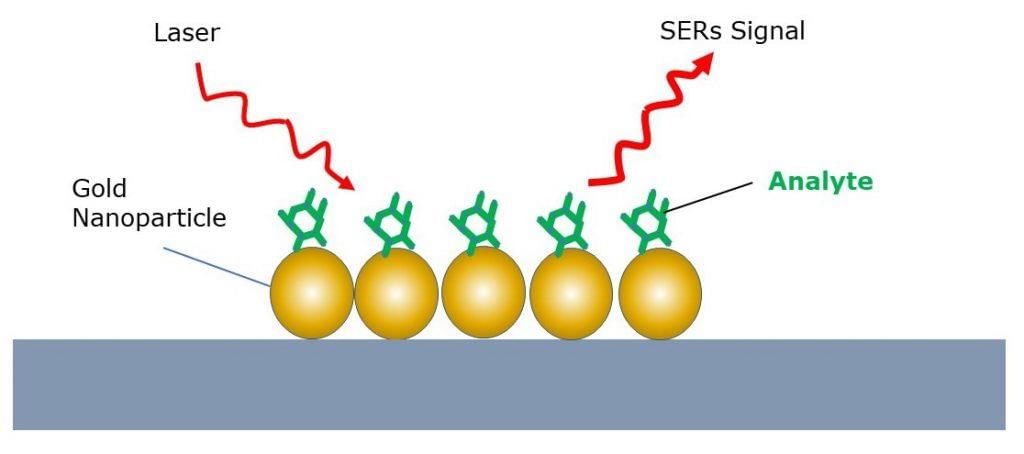 Why in News?
Why in News?Recent advancements in the development of a highly efficient nano catalyst have significant implications for environmental remediation, nanoscale electronics, and specifically in surface-enhanced Raman spectroscopy (SERS).
- Surface-enhanced Raman spectroscopy (SERS) is a technique that amplifies Raman scattering for molecules on rough metallic surfaces.
- This method enhances the Raman signals from molecules in proximity to nanostructured metallic surfaces, predominantly gold or silver.
- SERS provides similar information to traditional Raman spectroscopy but with significantly boosted signal strength.
Additional Details
- What is Raman Spectroscopy? It is a spectroscopic technique used to investigate vibrational, rotational, and other low-frequency modes within a system, relying on the inelastic scattering of monochromatic light, typically from lasers in the visible, near-infrared, or near-ultraviolet ranges.
- This technique was pioneered by the renowned Indian physicist C. V. Raman in 1928.
- SERS has become an essential tool across various fields including chemical, material, and life sciences due to its unique advantages.
In conclusion, the development of a new nano catalyst not only contributes to environmental sustainability but also enhances the capabilities and applications of surface-enhanced Raman spectroscopy, making it a vital area of research in modern science.
GS3/Environment
Hollongapar Gibbon Wildlife Sanctuary
Source: DTE
 Why in News?
Why in News?The Standing Committee of the National Board for Wildlife (NBWL), led by the Union Environment Minister, has sanctioned a proposal to initiate oil and gas exploration within the eco-sensitive area of the Hollongapar Gibbon Wildlife Sanctuary, located in Assam's Jorhat district.
- The Hollongapar Gibbon Wildlife Sanctuary is the only sanctuary in India named specifically for gibbons.
- This sanctuary boasts the highest density of gibbons in Assam.
- It serves as a habitat for diverse flora and fauna, including the hoolock gibbons and the Bengal slow loris.
- The sanctuary's approval for exploration has raised environmental concerns due to its status as an eco-sensitive zone.
Additional Details
- Location: The sanctuary is situated in Jorhat district, Assam, and lies at an altitude between 100 and 120 meters (330 and 390 feet).
- Flora: The upper canopy is predominantly composed of tall trees, while the middle canopy is primarily dominated by the Nahar tree. The lower canopy features evergreen shrubs and herbs, contributing to the ecological diversity of the area.
- Fauna: Notable wildlife includes India's only gibbons—the hoolock gibbons—and the region's only nocturnal primate, the Bengal slow loris. Other species found here include Indian elephants, tigers, leopards, jungle cats, wild boars, three types of civets, and various species of squirrels.
- National Board for Wildlife: Formed under Section 5A of the Wildlife (Protection) Act, 1972 (WLPA), this 47-member committee is chaired by the Prime Minister and includes the Minister of Environment, Forest, and Climate Change as the vice-chairperson. The committee is responsible for approving significant changes affecting wildlife habitats.
The recent approval for oil and gas exploration within the sanctuary raises critical discussions regarding the balance between developmental activities and environmental conservation, emphasizing the importance of protecting ecologically sensitive regions.
GS2/Polity
What is Universal Account Number (UAN)?
Source: Mint
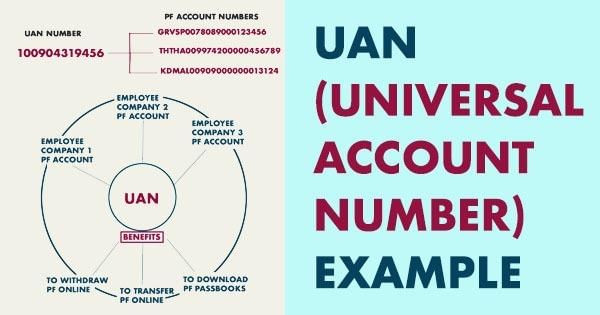 Why in News?
Why in News?The Employee Provident Fund Organisation (EPFO) has announced an extension for the deadline to activate Universal Account Numbers (UAN) and link Aadhaar with bank accounts. This initiative aims to facilitate the employees in managing their provident fund accounts seamlessly.
- UAN is a unique 12-digit number assigned to all salaried employees contributing to the Employee Provident Fund (EPF).
- It remains the same throughout an employee's career, even if they change jobs.
- The UAN helps in tracking multiple EPF accounts linked to an individual across various employers.
Additional Details
- Universal Account Number (UAN): It is a 12-digit number generated by the Employees' Provident Fund Organisation (EPFO) under the Ministry of Labour and Employment, Government of India. This number remains constant for an employee, regardless of job changes, and allows for easy access and management of multiple Member Ids.
- Employee Provident Fund (EPF): Established under the Employees' Provident Funds and Miscellaneous Act, 1952, EPF is managed by the EPFO. It mandates contributions from both employees and employers, each contributing 12% of the employee's basic salary along with dearness allowance. Upon retirement, employees receive a lump sum that includes their contributions, the employer's contributions, and accrued interest.
In conclusion, the UAN serves as a vital tool for employees to manage their EPF accounts efficiently, ensuring they retain their benefits even with job transitions. Linking Aadhaar and activating the UAN is essential to maximize these benefits.
GS3/Economy
United Nations World Economic Situation and Prospects 2025
Source: Business Standard
Why in News?
The United Nations (UN) has released its flagship report, highlighting significant predictions for the global and Indian economies for 2025. The report emphasizes the growth trajectory of various sectors, including India, which is expected to outperform many other economies.
- The Indian economy is projected to grow by 6.6% in 2025 and 6.7% in 2026.
- Global economic growth is anticipated to remain stable at 2.8% in 2025, consistent with 2024.
- Capital expenditure on infrastructure is expected to have significant multiplier effects on future growth.
- Expansion in the manufacturing and services sectors will continue to drive economic activity.
- Favorable monsoon conditions in 2024 are expected to enhance agricultural output for 2025.
- South Asia's economic growth is projected at 5.7% in 2025, largely driven by India's performance.
Additional Details
- Infrastructure Development: Increased capital expenditure is anticipated to create a ripple effect, stimulating various sectors and accelerating overall economic growth.
- Sectoral Growth: The report notes that robust growth in exports, particularly in pharmaceuticals and electronics, will support economic activity.
- Resource-rich developing countries like India are positioned to leverage rising demand for critical minerals, enhancing job creation and public revenue.
In conclusion, the UN World Economic Situation and Prospects 2025 report outlines a positive outlook for the Indian economy amid global stability, emphasizing the importance of infrastructure investment and sectoral expansions that promise to drive growth in the coming years.
GS2/International Relations
UN Committee of Experts on Big Data and Data Science for Official Statistics (UN-CEBD)
Source: The Hindu
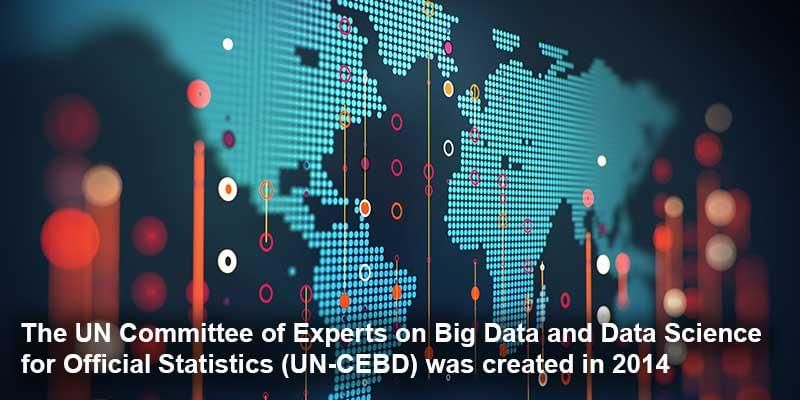 Why in News?
Why in News?India has recently become a member of the esteemed UN Committee of Experts on Big Data and Data Science for Official Statistics (UN-CEBD). This membership highlights India's commitment to leveraging modern data capabilities for improving official statistics.
- India's inclusion in UN-CEBD enhances its statistical capabilities.
- The committee focuses on innovative uses of big data to monitor Sustainable Development Goals (SDGs).
- Global collaboration for knowledge sharing and best practices is a key objective.
Additional Details
- Established in: 2014 during the 45th session of the UN Statistical Commission, with Australia serving as the first Chair.
- Mandate: The committee aims to develop global programs for the integration of big data into official statistics, monitor SDG indicators using advanced data science, and tackle challenges such as cross-border data sharing and ethical issues.
- Governance Structure: Comprises an Advisory Board for strategic oversight, a UN Bureau for operational tasks, and an implementation mechanism focused on capacity building and global collaboration.
- Powers and Functions: Encompasses integrating big data into national and international statistical systems, utilizing non-traditional data sources (e.g., IoT, satellite imagery), and advocating for data-driven policymaking.
India's participation in UN-CEBD is aimed at modernizing its statistical processes through advanced technologies and fostering global leadership in data governance. By leveraging big data, India seeks to enhance its ability to track and monitor the SDGs effectively, thereby enabling evidence-based decision-making to address socio-economic challenges.
GS3/Environment
What is Pink Fire Retardant?
Source: Indian Express
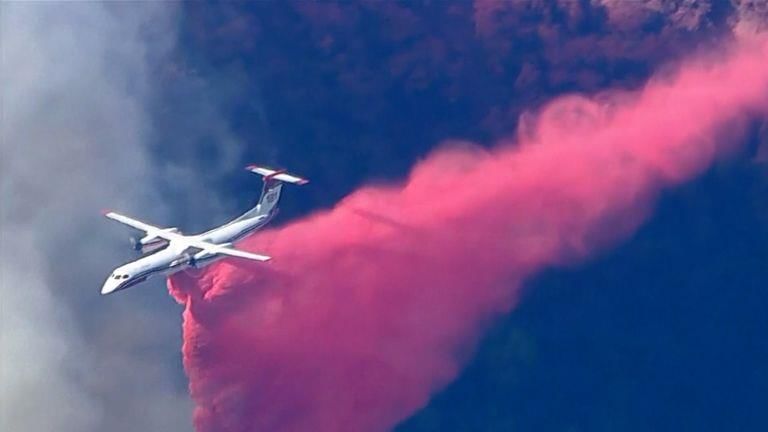 Why in News?
Why in News?As wildfires rage across Southern California, authorities are deploying aircraft to release large quantities of bright pink fire retardant to help control the flames.
- Pink fire retardant is a chemical mixture used to extinguish or slow the spread of wildfires.
- Phos-Chek is the most commonly used fire retardant in the U.S., primarily composed of ammonium phosphate-based slurry.
- The color pink is added to the retardant for visibility against the landscape, aiding firefighters in creating effective fire lines.
Additional Details
- Fire Retardant: This is a blend of chemicals designed to suppress fires. It typically includes salts like ammonium polyphosphate, which has a lower evaporation rate compared to water, allowing it to remain effective longer.
- Environmental Concerns: Experts argue that aerial application of fire retardant is not only ineffective but also costly and increasingly contributes to pollution in local water bodies. Since 2009, the use of Phos-Chek has released an estimated 850,000 pounds of toxic metals such as chromium and cadmium into the environment, posing risks of cancer and organ damage in humans, as well as threatening aquatic ecosystems.
In summary, while pink fire retardant plays a crucial role in wildfire management, its environmental impacts raise significant concerns that warrant further investigation and discussion.
GS2/International Relations
Neduntheevu Island Overview
Source: Business Standard
Why in News?Recently, 17 Indian fishermen were detained by the Sri Lankan Navy while they were fishing near Neduntheevu Island, highlighting ongoing tensions in the region regarding fishing rights and territorial waters.
- Neduntheevu, also known as Neduntivu, is the largest island in the Palk Strait, located in northern Sri Lanka.
- The island covers an area of 50 sq.km, measuring 8 km in length and about 6 km in maximum width.
- It is characterized by its flat, oval shape and is often wind-swept, contributing to its serene environment.
Additional Details
- Geographical Features: Neduntheevu is devoid of streams; its freshwater supply is primarily sourced from surface water collected in natural depressions and artificial ponds.
- The island is home to various dry shrubs and semi-arid tropical plants, alongside tall palm trees that enhance its beach-like atmosphere.
- Another notable feature is the Dutch fort constructed from dead coral chunks, which serves as a historical landmark.
- The population consists of approximately 4,800 Tamil people, who reside in compounds concentrated in the northern part of the island.
This recent incident involving the fishermen underscores the complex relationship between Sri Lanka and India, particularly concerning fishing rights and maritime boundaries in the Palk Strait, an area rich in marine resources.
GS2/International Relations
INTERPOL Publishes First Silver Notice Targeting Criminal Assets
Source: The Hindu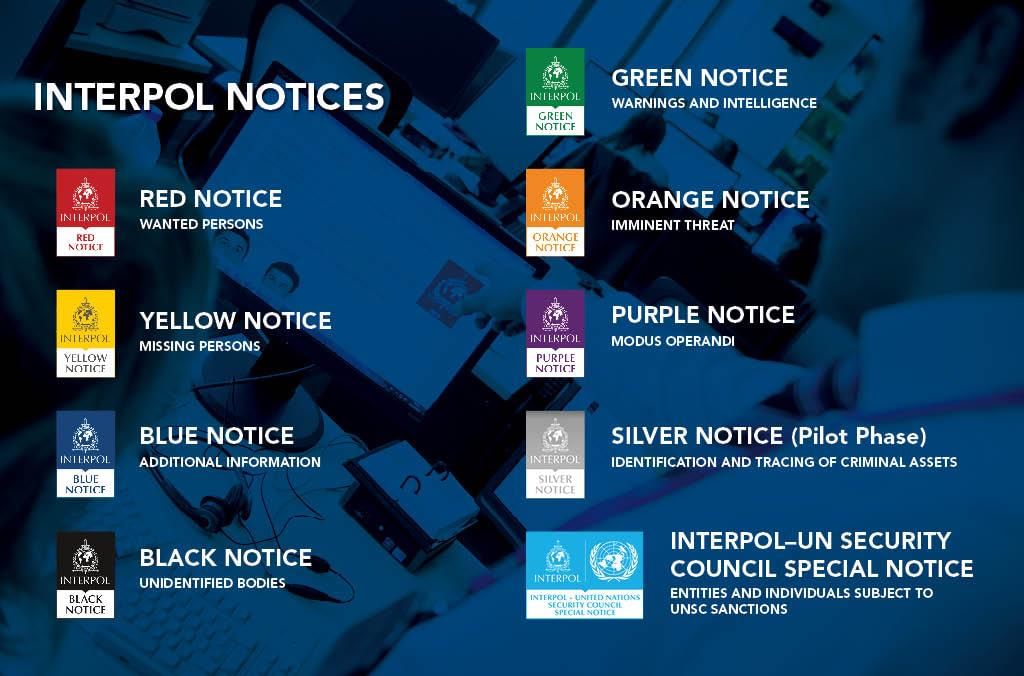 Why in News?
Why in News?
The International Criminal Police Organization, commonly known as INTERPOL, has announced the issuance of its first Silver Notice aimed at tracing and recovering criminal assets. This development signifies the expansion of INTERPOL's color-coded notices to specifically address the financial aspects of organized crime networks.
- The Silver Notice initiative focuses on tracing, locating, and recovering criminal assets linked to various crimes including fraud, corruption, drug trafficking, and environmental offenses.
- Launched in 2023, the initiative is in a pilot phase involving 52 countries and is set to continue until November 2025.
- The first Silver Notice was requested by Italy to track assets related to a senior mafia member, highlighting its potential to combat organized crime.
Additional Details
- Silver Notice: This is an INTERPOL initiative designed to target assets such as properties, vehicles, financial accounts, and businesses that are connected to criminal activities.
- Functionality: Member countries can solicit INTERPOL for Silver Notices to gather information about criminal assets. These notices are shared globally with all 196 member states, while specific Diffusions can be directed to individual countries for focused cooperation.
- All Silver Notices and Diffusions undergo review by INTERPOL's General Secretariat to ensure adherence to its regulations, including prohibitions against political misuse as specified in Article 3 of the INTERPOL Constitution.
This new initiative by INTERPOL represents a significant step in the fight against organized crime, demonstrating how international cooperation can be leveraged to trace and recover illicit assets across borders.
GS3/Environment
Groundwater Contamination in India
Source: The Hindu
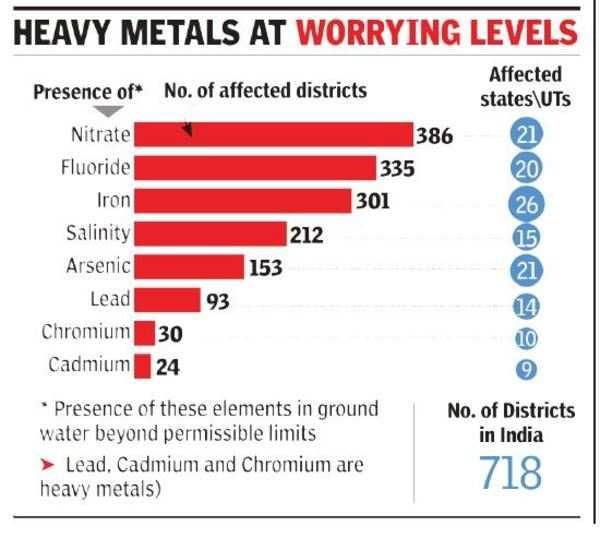 Why in News?
Why in News?The Central Ground Water Board (CGWB) has reported a significant concern regarding groundwater contamination in India, particularly highlighting the alarming levels of nitrates found in several states.
- Many states in India are experiencing high nitrate levels in groundwater.
- Contamination is primarily driven by agricultural and industrial activities, as well as natural geological factors.
- Health risks associated with contaminants include serious conditions like methemoglobinemia.
Additional Details
- Nitrates: The overuse of nitrogen-based fertilizers has resulted in excessive nitrate levels, with over 56% of India's districts reporting concentrations exceeding the safe limit of 45 mg/l.
- Fluoride: Particularly problematic in states like Rajasthan, Haryana, and Karnataka, around 9.04% of groundwater samples exceeded the permissible fluoride limit of 1.5 mg/l.
- Arsenic: Naturally occurring arsenic is a concern, especially in industrially impacted alluvial plains.
- Uranium: Elevated levels detected in regions like Rajasthan and Punjab, with about 6.60% of samples surpassing the safe limit of 30 ppb.
- Iron: High iron concentrations can pose aesthetic issues and health risks when ingested.
- Other Heavy Metals: Contamination from lead, cadmium, mercury, and chromium arises from industrial discharges and poor waste management.
In 2024, groundwater extraction rates remained stable at approximately 60.4%. About 73% of groundwater blocks were classified as 'safe', with a slight increase in adequate replenishment observed. Total annual groundwater recharge has slightly declined from 449 BCM in 2023 to 446.90 BCM in 2024, indicating ongoing challenges particularly with nitrate contamination, affecting 440 districts.
Groundwater levels are monitored through a network established by CGWB, which includes approximately 26,000 observation wells and 16,000 to 17,000 digital piezometers for real-time data collection.
Health and Environmental Impacts
- Health Risks: High nitrate levels can lead to methemoglobinemia, also known as "blue baby syndrome," primarily affecting infants.
- Environmental Concerns: Excessive nitrates can cause algal blooms in water bodies, disrupting aquatic ecosystems and depleting oxygen levels.
Way Forward
- Sustainable Agricultural Practices: Adoption of organic fertilizers and precision farming to reduce nitrate leaching.
- Strengthened Monitoring and Remediation: Expanding digital monitoring and enforcing industrial regulations to combat contamination.
Addressing groundwater contamination requires a multifaceted approach that includes improving agricultural practices and enhancing monitoring systems to ensure the sustainability of water resources in India.
GS3/Economy
National Programme for Organic Production
Source: Business Standard
Why in News?The Union Minister of Commerce and Industry has recently released the eighth edition of the National Programme for Organic Production (NPOP), highlighting its role in promoting organic farming in India.
- The NPOP was launched in 2001 to develop the organic agriculture sector in India.
- The programme aims to promote sustainable farming practices and enhance global competitiveness for Indian organic products.
- APEDA (Agricultural and Processed Food Products Export Development Authority) is the implementing agency for this programme.
- The eighth edition introduces amendments to simplify certification and enhance transparency for stakeholders.
Additional Details
- Accreditation of Certification Bodies: NPOP involves the accreditation of certification bodies and establishes standards for organic production.
- Simplified Certification Requirements: Organic grower groups have been granted legal status, replacing the previous Internal Control System (ICS).
- New Portals Launched:
- NPOP Portal: Offers visibility and operational ease for organic stakeholders.
- Organic Promotion Portal: Allows farmers and exporters to showcase certified organic products and connect with global buyers, including online training sessions.
- TraceNet 2.0: An upgraded online organic traceability system for better regulatory oversight.
- APEDA Portal: Redesigned for enhanced user experience and information accessibility for stakeholders.
- AgriXchange Portal: User-friendly platform for data analysis related to agricultural exports.
This initiative aims to boost organic product exports significantly, targeting a goal of Rs 20,000 crore in three years, thus enhancing the economic viability of organic farming in India.
GS2/Polity
Should Voter IDs Be Linked with Aadhaar?
Source: The Hindu
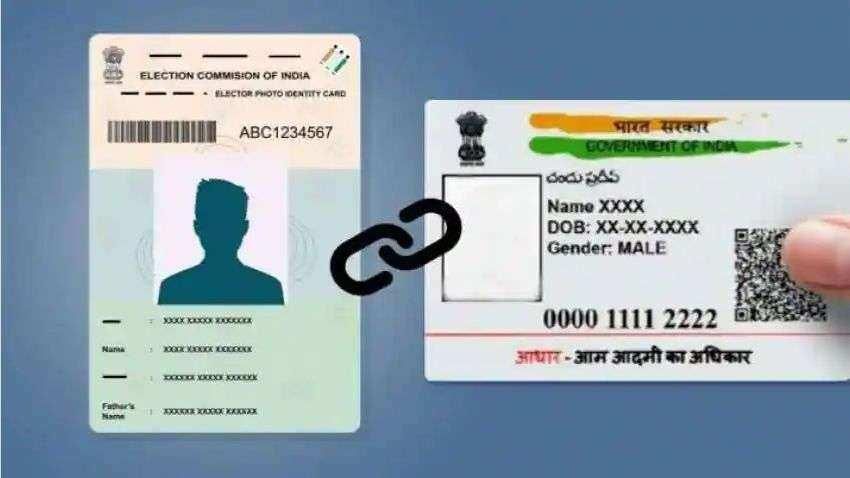 Why in News?
Why in News?The issue of linking Election Photo Identity Card (EPIC) with Aadhaar has gained traction due to recent accusations of electoral roll manipulation by political parties, particularly in the context of the upcoming Delhi Assembly elections.
- Linking EPIC with Aadhaar aims to enhance electoral integrity and eliminate duplicate entries.
- Concerns include potential privacy risks, errors in the Aadhaar database, and public misconceptions about data security.
- The process of linking Aadhaar is currently voluntary and not mandatory, as clarified by the Election Commission (EC).
Additional Details
- Historical Context: The National Electoral Rolls Purification and Authentication Program (NERPAP) was initiated in 2015 to eliminate duplicate voter entries by linking EPIC with Aadhaar. However, the Supreme Court intervened, halting the mandatory linkage.
- Current Process: New voters can provide Aadhaar during registration using Form 6, while existing voters can authenticate using Form 6B. Alternative documents can be submitted if Aadhaar is unavailable.
- Advantages: Linking Aadhaar can lead to cleaner electoral rolls, improved electoral integrity, and greater administrative efficiency.
- Challenges: Risks include inaccuracies in the Aadhaar database leading to wrongful exclusions, privacy concerns regarding data misuse, and public fears about vote secrecy.
- The Way Forward: The EC should enhance public communication, update forms to clarify the voluntary nature of Aadhaar linkage, and implement strong data security measures to protect voter information.
In conclusion, while linking voter IDs with Aadhaar holds potential benefits for the electoral process, it must be approached with caution to address the concerns of privacy, data accuracy, and public trust. A balanced strategy focusing on transparency and security will be crucial to strengthen democratic processes in India.
|
38 videos|5356 docs|1133 tests
|
FAQs on UPSC Daily Current Affairs: 13th January 2025 - Current Affairs & Hindu Analysis: Daily, Weekly & Monthly
| 1. What are the primary causes of groundwater contamination in India? |  |
| 2. How does groundwater contamination affect public health in India? |  |
| 3. What measures can be taken to prevent groundwater contamination in India? |  |
| 4. What role does the government play in addressing groundwater contamination in India? |  |
| 5. How can individuals contribute to reducing groundwater contamination? |  |





















